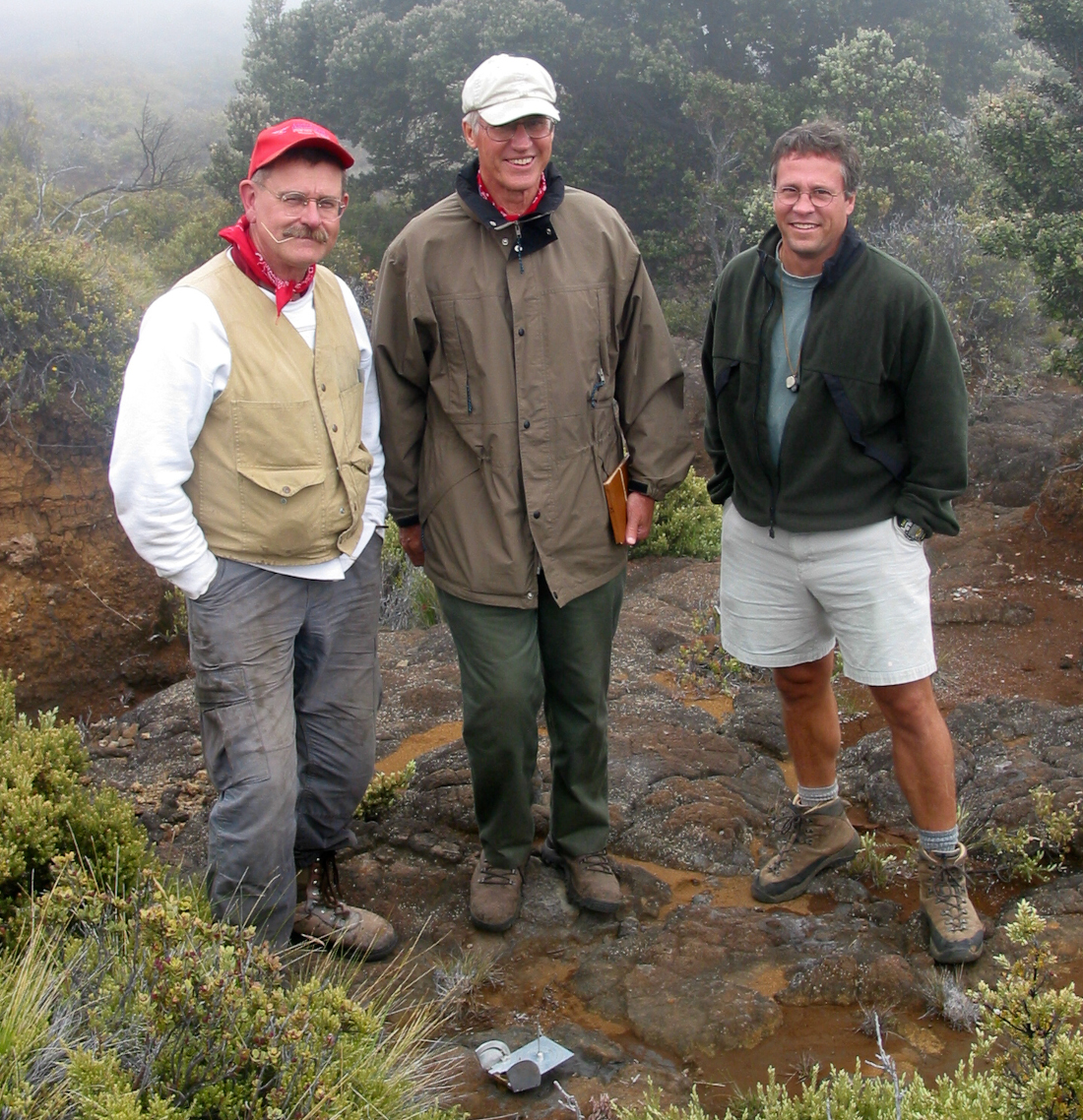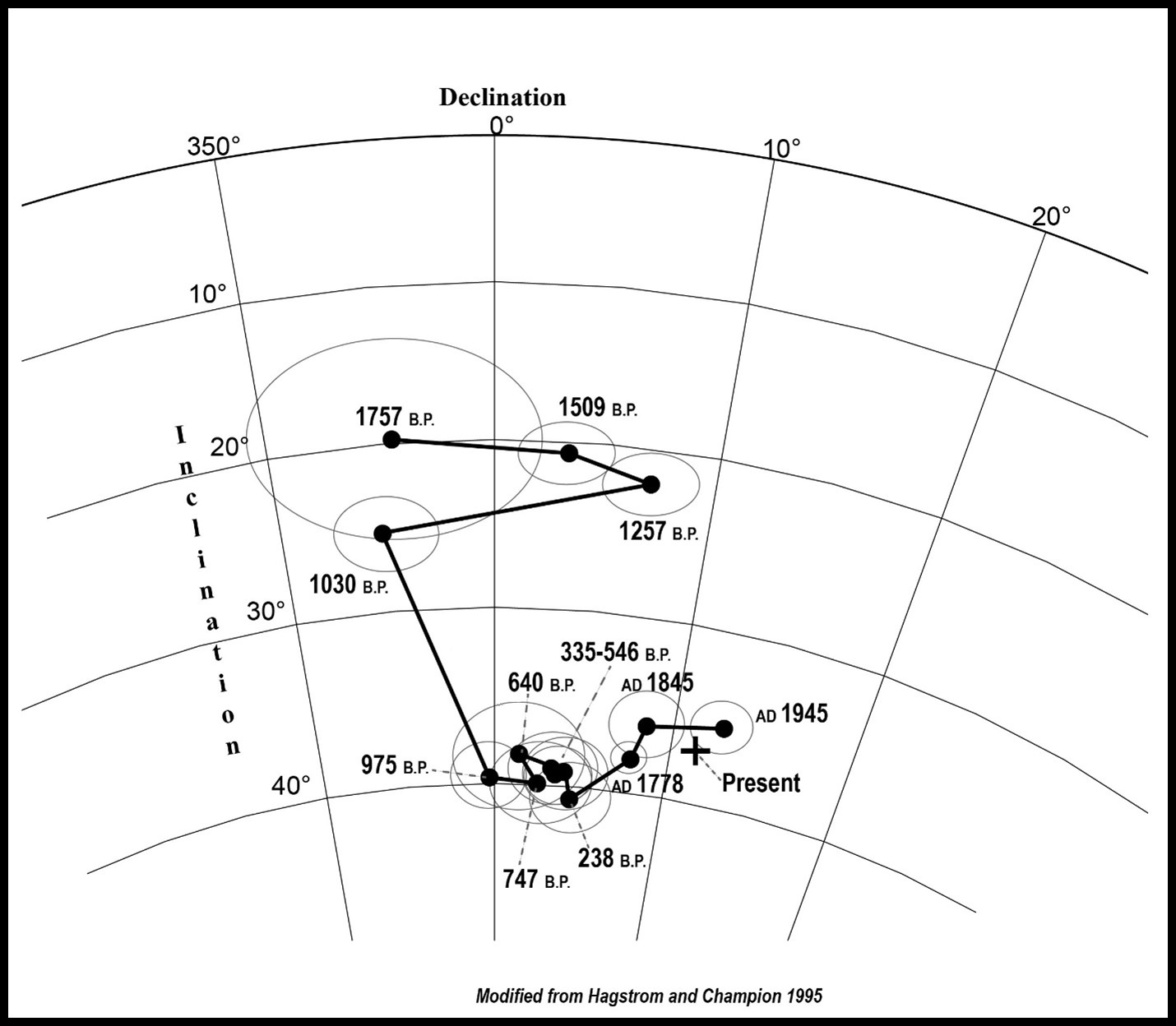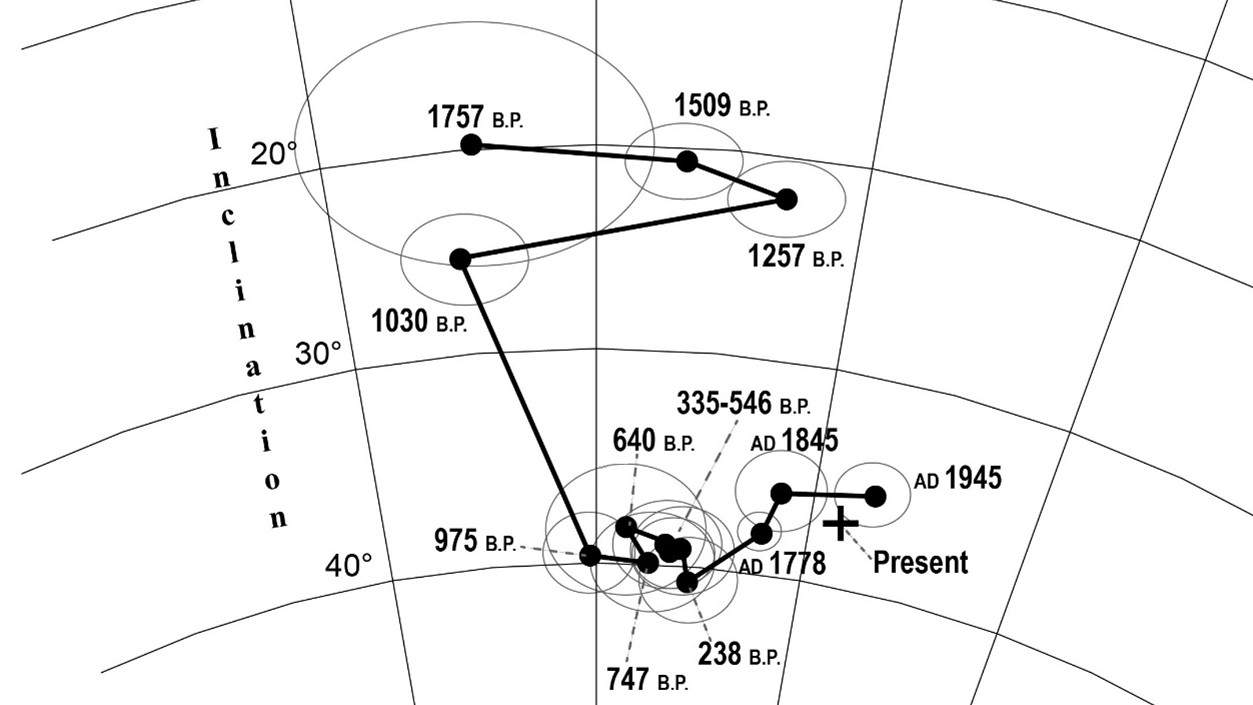(BIVN) – From this week’s Volcano Watch article written by U.S. Geological Survey Hawaiian Volcano Observatory scientists and affiliates:
When we think about the Earth’s magnetic field, we often associate it with compasses and navigation. However, did you know that our planet’s magnetic field has a rich history of change, including switching of polarity, that spans millions of years?
This captivating field of study, known as paleomagnetism, allows us to delve into the Earth’s magnetic past and understand how our planet has evolved over time. In this Volcano Watch, we will explore the concept of paleomagnetism, its components, its significance in geology, and the noteworthy contributions of USGS scientist Duane Champion in volcanology. This article is dedicated to Duane, a good friend and valuable colleague who passed away earlier this year.

USGS: “Duane Champion (shown here on the left, with two coworkers) helped us to unlock Pele’s secrets by studying the magnetic properties preserved in lava flows. A good friend and valuable colleague, he greatly improved our ability to reconstruct past geological events using paleomagnetism. He will be missed.”
The Earth’s magnetic field is generated by the motion of molten iron in its outer core. This field not only provides us with our compass directions but also leaves a permanent record in rocks as they solidify or settle.
Paleomagnetism is the study of the Earth’s ancient magnetic field, preserved in rocks, minerals, and sediments. It is based on the principle that certain magnetic minerals within these materials record the direction and strength of the Earth’s magnetic field at the time of their formation. By analyzing these preserved records, scientists can reconstruct the movements of tectonic plates, study the Earth’s magnetic field reversal events, gain insights into past climates, and in our case reconstruct the geologic histories of volcanoes.
Paleomagnetism involves several key components that aid in deciphering the Earth’s magnetic history. One of these components is magnetic polarity, which refers to the direction of the Earth’s magnetic field at a particular location and time. The Earth’s magnetic field periodically flips, with the north and south magnetic poles exchanging places. By analyzing the magnetization of rocks, scientists can determine the polarity of the Earth’s magnetic field at the time the rocks formed.
Another crucial component is magnetic inclination, which measures the angle between the magnetic field lines and the Earth’s surface. This inclination provides information about the latitude of the rock’s formation. By comparing the inclination of rocks from different locations and ages, scientists can reconstruct the movement of continents over time.
Secular variation refers to gradual changes in the Earth’s magnetic field over durations shorter than those between polarity flips. These variations can be observed in the orientation and intensity of the magnetic field. By examining rocks of different ages, scientists can determine the past characteristics of the Earth’s magnetic field. This information helps in understanding plate tectonics, and in Hawaii, it helps to understand past periods of eruptive activity.

USGS: “Paleomagnetic secular variation curve for the past two thousand years. Label dates are mean ages before present (B.P.) or Anno Domini (AD), with gray circles indicating estimated error. Note that the magnetic field changes in declination (horizontal arched lines) and inclination (angled vertical lines) over time. Diagram is a section of an equal-area net where symbols indicate directions projected from the lower hemisphere.”
Paleomagnetism also aids in dating rocks and archaeological artifacts. By comparing the magnetic signature in rocks to known changes in the Earth’s magnetic field and/or dated lava flows, scientists can estimate their ages. This technique, known as paleomagnetic dating, complements other dating methods and contributes to the development of accurate geological timescales.
In geologic terrains, specifically in Hawaii, reliably correlating older lava flows is a major challenge on volcanoes that consist entirely of compositionally similar basalt. Criteria for correlation include physical appearance, flow morphology, paleomagnetic pole directions, chemistry, and assorted evidence on the lava flow age. Magnetic minerals that crystallize from molten magma record the Earth’s magnetic field direction at the time of their cooling. Accordingly, paleomagnetic measurements are indispensable for making correlations among flows over large distances.
In the field of paleomagnetism, Duane Champion made notable contributions that have advanced our understanding of volcanism in the western United States. Champion’s studies also contributed to refining paleomagnetic dating techniques, enabling more accurate dating of eruptive activity. In Hawaii, Duane’s work with paleomagnetism allowed us to unlock some of Pele’s secrets by studying the magnetic properties preserved in lava flows. Working closely with geologists, he greatly improved our ability to reconstruct past geological events. His high standards of sample collection and lab processing are admired internationally. A long-time colleague of Volcano Science Center geologists, Duane leaves a legacy that will live long into the future.


by Big Island Video News7:35 am
on at
STORY SUMMARY
HAWAIʻI ISLAND - This week's Volcano Watch article examines paleomagnetism and its geological applications.